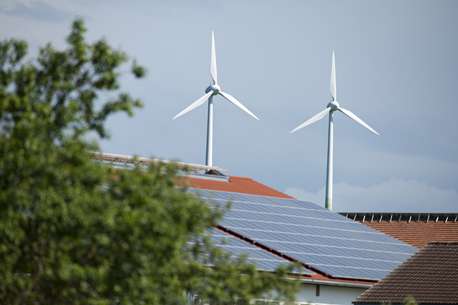Energy transition project moves into its second phase

Siemens is studying new concepts for optimizing the cost-effectiveness and technical performance of energy systems with distributed and fluctuating electricity production. The associated IRENE research project is now being replaced by IREN2. The initial project focused on building a smart grid in the municipality of Wildpoldsried in the Allgäu region of Germany. The project partners are now using the grid to examine ways to stabilize the electricity supply using intelligent sub-units that operate with a decentralized electricity generation system. Specialists are also looking at ways to combine several small power generation units, and possibly battery storage devices as well, in a manner that would enable them to contribute to system stability in much the same way conventional power plants do. Wildpoldsried sometimes produces more energy than it needs because many of its residents operate solar power units, windmills, and biogas power generation systems, or cogeneration systems. The municipality's power supply voltage is controlled by variable local grid transformers, distributed power generation units and storage devices.
As part of the IREN2 project additional diesel generators are being installed and these are playing a role similar to that of gas-fired power plants in large grids - i.e. making electricity available when it's needed. Some of the participants in the Wildpoldsried grid are now being combined in an independent grid equipped with its own energy management system. Among other things, project specialists are testing the process by which the grid automatically restarts itself as an insulated grid (separate network) after a sudden unforeseen power outage in the overall power distribution network. They're also testing the planned process for disengaging an insulated grid from the distribution network and then reconnecting to it. Concepts for safeguarding grids have to be redesigned as well. Today's over-current protection devices mostly need more short-circuit capacity than is availably from decentralized generation untits.
Key role for intelligent inverters
For future control and protection intelligent inverters will play a key role in times of high output from decentralized units. Together with other generation units and energy consumers they will be combined to topological power stations.
This is the term used to describe a setup in which several distributed power generation units in a grid area are linked together and then operate like a single large power plant. IREN2 is studying how tasks such as regulating supply voltage and frequency, making available short-circuit power, and planning electricity generation schemes can be carried out with such topological power plants. A consequent decentralization of power generation can only be achieved if the control systems are also distributed.
Siemens Corporate Technology joins forces with Siemens experts for Smart Generation Solutions and Smart Grids together with Kempten University of Applied Sciences, RWTH Aachen University, the Allgäuer Überlandwerke power utility, and ID.KOM. The project is scheduled to run for three years.
Provided by Siemens





















